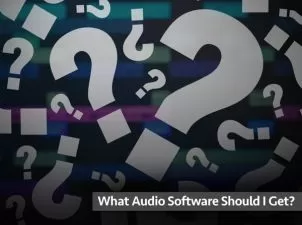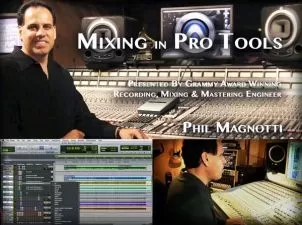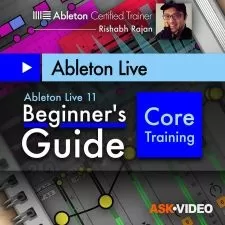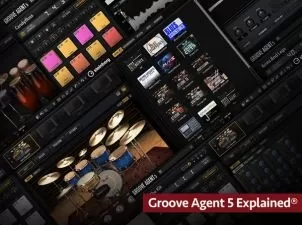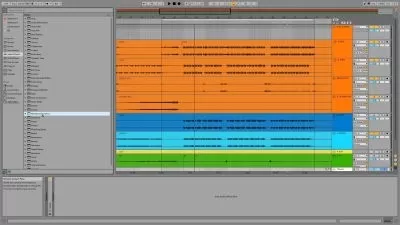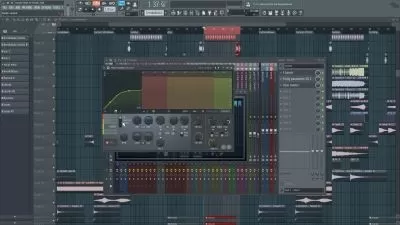Orchestral Mixing Explained®
Gary Hiebner
4:47:31
Description
In this Groove3 video tutorial series, DAW pro Gary Hiebner presents a video series all about mixing orchestral music and instruments. Learn how to approach this artful task and get results that sound both realistic and incredible.
Gary welcomes you to the series and discusses the approach to take when mixing orchestral instruments, as well as explaining the different sections of an orchestra, the different microphones used and why, standard orchestra positioning, and the differences in sound and qualities of an ensemble section versus a solo player.
Next, you’ll learn about the foundations of orchestral mixing such as how to balance the different sections and creating reverb sends for the different instruments. Gary then focuses on mixing techniques for the different ensembles including Strings, Brass, Woodwinds and Percussion, plus extra orchestral instruments like Piano, Harps and Choirs.
Moving on you’ll explore how to enhance the dynamics of your orchestral mix with VCA Automation, and the steps to take to finalize and master your orchestral mix, including what mastering processors are usually used.
Gary then gives you more videos on related topics like mixing smaller orchestral setups, using EaReckon's tool EarReverb and Parallax Audio's Virtual Sound Stage for better placement of your orchestral instruments in the mix, and mixing a Hybrid Rock/Orchestral production so you’re ready for any mix task that incorporates orchestral instruments.
See the individual tutorial descriptions for more info. If you’re new to mixing orchestral instruments or just want more tips, ideas and techniques, this is the tutorial collection to watch… Checkout “Orchestral Mixing Explained®” today!
There are many things our users love about Groove3, but a couple always stand out at the top when asked why people choose us as their learning resource.
We meticulously craft professional quality tutorials that are thoughtful, informative and done with attention to detail. We stand behind our products with a 100% satisfaction guarantee and are trusted by 1000s of users every day.
Our library brings over 1700 hours of quality instruction to you fingertips and we release new content every week. Don't waste your valuable time scouring the web for information you may never find or is cumbersome to use and potentially can't be trusted.
A lot of insightful tips and tricks here for anyone taking on orchestral mockups.
I have been through numerous mixing courses from multiple sites and I'm sad to say that this one just does not measure up to others. I really like Groove 3 and this author, but I will not go any further on this tutorial after the mixing of the Strings section. I know these things are subjective, but the samples used are not great and the mix sounds flat. The narrowing of the stereo field on the string parts is not very realistic, since the instruments emanate out into the space. They do not sound almost completely to one side. The final straw for me was the boost on the strings bus around 2.5k where this is an absolute known zone for "harshness" on many string samples. If you do a big boost like this on many of the sample libraries, your strings will most likely come out incredibly harsh and unrealistic sounding. I always have great hope to pick things up off of groove 3 videos, but I can't continue on with this one.
Groove3 just does a great job on in-depth explanations of everything. Highly recommend!
I have a better understanding of the setup in logic. However it applies to any DAW. Placement and reverb techniques are a must learn. I did not realize just how important in order to get that orchestral sound. The explanation is clear and you can hear the difference immediately. It all just makes sense. The end section, working with band and orchestra, was extremely helpful. Thank you so much, I can’t wait to Implement these techniques in my current project.
The presentation of the content was fine, and the most basic, elemental advice seemed mostly okay, but too much of the content beyond those basics seems questionable to me. I won’t endeavor to list every suggestion in this video that runs counter to what I’ve heard from multitudes of experienced orchestral engineers before now, but suffice it to say that I found quite a bit of the advice offered by the course to be dubious. Sorry ... I wish I could have said I was impressed, but I can’t.
Enjoying the clear presentation
I am a: Student, Beat Maker, Ableton Live
I love this course, I have learn a lot, very organized too.
I am a: Professional, Musician, Sound for Film/TV, Cubase
There are a couple of very interesting tools
I am a: Hobbyist, Musician, Logic Pro, Reaper
It’s Easy to understand and inspire me lot of thinks. I am french. French subtitles will help sometime but we don’t have it. You can understand because it is not too fast
For the first time things are clear to me. Totally well organized and clearly explained. .
I am a: Professional, Sound for Film/TV, Logic Pro
More details
User Reviews
Rating
Gary Hiebner
Instructor's Courses
Groove 3
View courses Groove 3- language english
- Training sessions 26
- duration 4:47:31
- Release Date 2023/05/31







